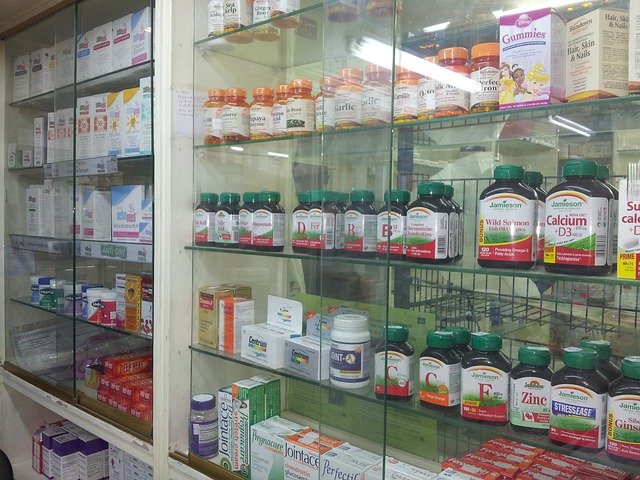Editors: David L. Joffe, BSPharm, CDE, FACA
Author: Jasmine Dumontier-Hiott, 2022 PharmD Candidate, University of South Florida Taneja College of Pharmacy
Can a new possible combination treatment with an SGLT-2 and a GLP-1-RA drug reduce the cardiometabolic risk in people with diabetes?
Dr. Vanita R. Aroda presented at the Scientific Sessions 2021 of the American Diabetes Association on the reduction of cardiometabolic risk through the combination of sodium-glucose-cotransporter-2 inhibitors (SGLT-2) and glucagon-like-peptide-1 (GLP-1 ) Receptor agonists. A literature review of current publications of the individual and combined SGLT-2 inhibitors and GLP-1-RA drug classes shows that the cardiorenal benefits outweigh the risks. Additionally, the AHA Heart Disease and Stroke Statistics released an update for 2021 regarding cardiovascular risk factors, health behaviors, and contributing health determiners to related outcomes. The world’s leading risk factor for years of life lost from 1990 to 2019 is ischemic heart disease. Additionally, the top risk factors for years of life with disability or injury worldwide and in the United States from 1990 to 2019 are high prandial fasting glucose and body mass index, which increased from 44.1% to 60.2%. The newly published statistics show a significant need for cardiorenal risk reduction due to diabetes and obesity.
A randomized control study published in the AHA Circulation by Dave CV et al. assesses the risk of cardiovascular consequences in patients with type 2 diabetes after adding SGLT-2 inhibitors compared to sulfonylureas for basic therapy with GLP-1-RA. The current study aims to clarify whether the combination therapy of SGLT-2 inhibitors and GLP-1-RA brings additional cardiovascular benefits. The study included three data sets with 12,584 propensity-score-matching pairs. Cardiovascular myocardial infarction outcome and all-cause mortality were reduced by 24% in SGLT-2 patients and hospital admissions for heart failure were reduced by 35% compared to sulfonylurea patients. Thus, the addition of SGLT-2 to GLP-1-RA therapy resulted in a more significant reduction in cardiovascular risk. However, residual mix-ups between the therapeutic agents cannot be ruled out. The EXSCEL study by Clegg LE et al. investigated the effects of treatment with exenatide and an open-label SGLT-2 inhibitor on mortality, cardiovascular and renal outcomes in patients with type 2 diabetes. In the 2019 open parallel study, 575 patients in the SLGT-2 arm and 572 patients in the placebo arm were examined. The risk of serious cardiovascular events was reduced and the eGFR was significantly improved in the SGLT-2 group compared to the placebo group. Thus, the post hoc analysis supports the combination of GLP-1 and SGLT-2 therapy with regard to possible benefits in cardiovascular outcomes. However, additional research studies are needed to reach a more robust conclusion.
Aroda VR et al. published a study in 2019 examining the efficacy, safety, and cardiovascular outcomes of subcutaneous semaglutide in the treatment of type 2 diabetes. The data were verified from Phase 3 clinical trials of SUSTAIN 1 through 7 in over 8,000 patients. In all studies, semaglutide consistently demonstrated superior glycemic control, weight loss, and a reduction in cardiovascular risk compared to placebo and standard of care. In addition, the safety profile of semaglutide was similar to that of the comparator, except for an increased incidence of gastrointestinal effects, malignant neoplasms, cholelithiasis, increased lipase levels, pancreatitis and diabetic retinopathy. The side effects must be taken into account when creating a patient-specific therapy plan.
The pharmacological approaches of ADA 2021 for the glycemic treatment pathway will first be divided into indicators for high-risk / established ASCVD, CKD, HF and A1C above the individualized goal. Patients with a heart failure LVEF of less than 45% are recommended to initiate an SGLT-2 inhibitor. High-risk ASCVD, CKD, weight loss promotion, and minimized hypoglycemia indications may benefit from SGLT-2 inhibitors or GLP-1-RA for demonstrated cardiorenal risk reduction, superior weight loss, and low incidence hypoglycemia in clinical trials. Finally, there is the monetary category, in which costs are a significant obstacle to optimal care, in which neither SGLT-2 nor GLP-1 RA are indicated. SGLT-2 and GLP-1 RA are among the more expensive anti-hyperglycemia drugs. The JACC 2020 expert consensus decision path on novel therapies to reduce cardiovascular risk in patients with type 2 diabetes discusses the lack of studies on the simultaneous use of SGLT-2 and GLP-1-RA with cardiovascular benefits. Regarding the personal benefits demonstrated in numerous studies, JACC 2020 determined that the application of both SGLT-2 and GLP-1 RA can be used when indicated.
Because of the high cost, monotherapy or dual treatment is impractical for many people. According to the evidence gaps, the study-based therapy use in insured patients in the USA with type 2 diabetes and atherosclerotic cardiovascular disease evaluates the underuse of evidence-based therapies in 155,958 patients. 24.7% of patients used high-intensity statins, 53.1% used ACE inhibitors or ARB, and 9.9% used either SGLT-2 inhibitors or GLP-1-RA. 2.7% of the patients were insured for all three therapies. This study is a call to action for all stakeholders to address the supply gap.
Practice pearls:
- The EXSCEL study concluded that RA therapy from SGLT-2 to GLP-1 resulted in a more significant reduction in cardiovascular risk.
- JACC 2020 has determined that the use of both SGLT-2 and GLP-1 RA can be used when appropriate.
- Because of the high costs, neither monotherapy nor dual treatment makes sense for many people.
Aroda VR. Combination therapy with SGLT2i and GLP-1RA to reduce cardiorenal risk. American Diabetes Association Mini-Symposium. 2021 June 25th (Requires ADA Symposium login.)
Virani SS, Alonso AHeart Disease and Stroke Statistics-2021 Update: A Report from the American Heart Association. Traffic. February 23, 2021
Jasmine Dumontier-Hiott, 2022 PharmD Candidate, University of South Florida Taneja College of Pharmacy


Comments are closed.